kidney & bladder support

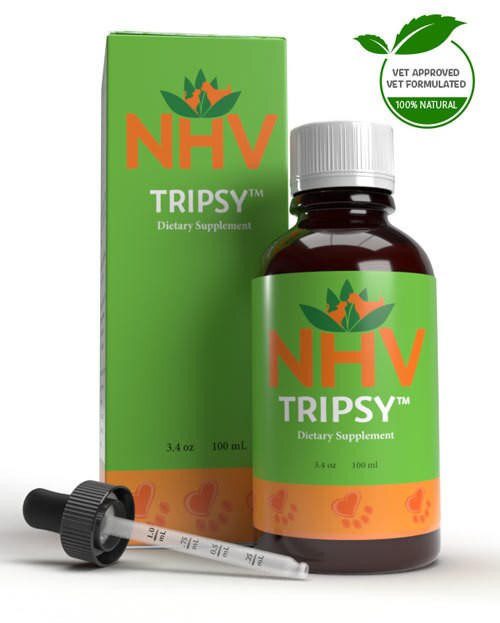
free shipping over $100 (USA & Canada)
1-877-937-4372 the pet expert hotline

Herbal Digestive Aid, Energy Booster, and Multivitamin for Cats

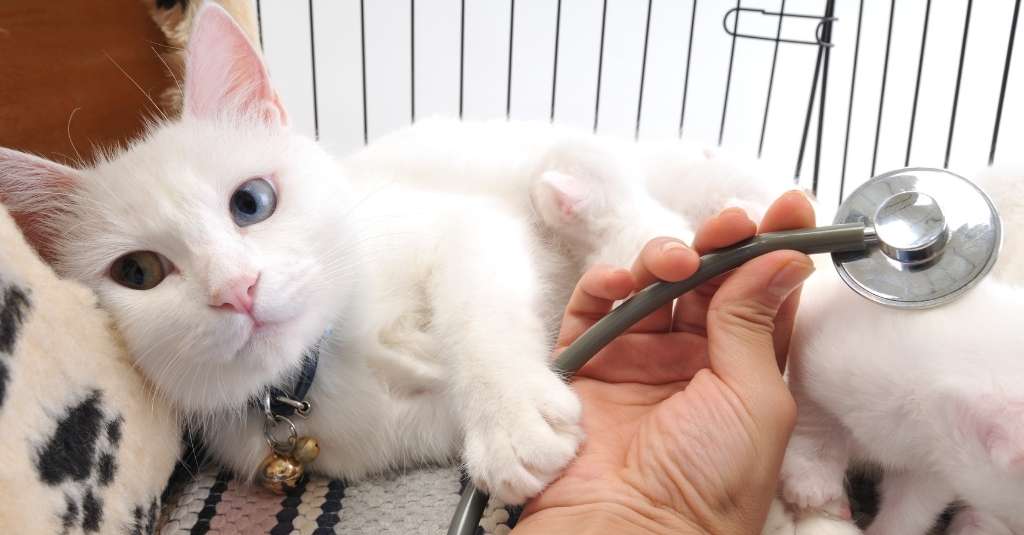
Blood work and laboratory tests are often requested by your veterinarian. Blood work can be used in healthy pets, pets that will undergo anesthesia, and in sick pets. The tests are performed to provide objective information about the general health of the furkiddo. The results of each test can be helpful in monitoring ill patients as well as reaching a proper diagnosis. The interpretation of multiple tests, combined with careful study of the symptoms, allows the proper assessment and diagnosis of health conditions. Keep reading to learn about how useful cat and dog blood tests can be!
Some of the most common tests include blood chemistry, complete blood count (CBC), urinalysis, X-ray, and ultrasound (US) exams. The full interpretation of the exams, associated with the examination of the pet, will depend on the veterinarian, but here is some information for you to better understand the types of exams as well.
It is routinely asked to assess specific organ enzymes that will tell the veterinarian (and you) if the organs are functioning properly. Here are some of the enzymes analyzed on the chemistry and what they mean. Just remember that not all their meanings will be fully addressed in this blog, but some of the most common ones are:
BUN (blood urea nitrogen) — Higher values may be seen with decreased kidney function, dehydration, and heart disease. Lower values may also be seen with overhydration.
CREA (creatinine) — Higher values may be seen with decreased kidney function and other conditions as noted with BUN. Lower values may be seen with overhydration.
PHOS (phosphorus) — Elevations of this enzyme are seen with decreased kidney function through conditions like kidney disease, increased intake through the gastrointestinal tract, and increased release from injured tissues. In growing puppies and kittens these increases can be normal and a decrease of this enzyme may be seen with increased loss or decreased intake.
Ca+ (calcium) — An increase of this enzyme may indicate a variety of diseases including kidney disease, certain cancers, toxicities, and parathyroid disease. Decreases may be seen with certain parathyroid diseases and with low albumin.
ALT (alanine aminotransferase) — Higher values are a sensitive indicator of liver cell damage.
ALKP (alkaline phosphatase) — Higher values may indicate a liver abnormality (cholestasis), Cushing’s disease, active bone growth in young pets, active bone remodeling after bone injury.
GGT (gamma-glutamyl transferase) — Higher values may indicate a certain type of liver abnormality (cholestasis).
ALB (albumin) — Higher values may indicate dehydration while lower values may be seen with decreased liver function, blood loss, gastrointestinal or kidney disease.
Na+ (sodium) — Higher values may indicate dehydration. Lower values may be seen with loss from diarrhea and vomiting or, with Addison’s and kidney disease.
K+ (potassium) — Higher values may indicate kidney disease due to decreased excretion, Addison’s disease, dehydration, and even kidney obstruction. Lower values may be seen with loss from diarrhea or vomiting.
Other types of chemistry blood tests can monitor pancreas activity, protein profile, glucose, cholesterol levels, cortisol levels, thyroid levels, among others. Your veterinarian can assess your pet’s condition and judge if any and/or all tests are necessary.
This type of blood test is by far the most common one since it directly assesses anemia and infection through the blood count.
RBC (red blood cell count), HCT (hematocrit), and HGB (hemoglobin) — Higher values may indicate dehydration or disease of increased production of RBCs. Lower values can indicate anemia and decreased oxygen-carrying capability of the blood.
MCV (mean cell volume) — Higher values indicate the presence of larger than normal cells, which may be related to young cells during a response to anemia. Lower values indicate the presence of smaller than normal cells, which may be associated with chronic blood loss/iron deficiency.
MCH (mean cell hemoglobin), MCHC (mean cell hemoglobin concentration), RDW (red cell distribution width, RETIC (reticulocytes) — Are other measure parameters addressed on the CBC and will be interpreted by your veterinarian.
WBC (white blood cells) — Higher values may indicate inflammation, stress, excitement, or leukemia. Lower values may indicate overwhelming inflammation and bone marrow failure.
Leukocyte Differential — Various patterns of change in numbers of NEU (neutrophils), LYM (lymphocytes), MONO (monocytes), EOS (eosinophils), and BASO (basophils) may be seen with different types of inflammation, stress, excitement, or leukemia, among other conditions that can be found through veterinary blood tests.
Platelet (PLT) and PCT (platelet crit) — Higher values of overall platelet mass are potentially associated with a hypercoagulable state. Lower values may be seen with decreased production in the bone marrow (failure), and destruction in the blood (infectious, immune-mediated, etc.).
MPV (mean platelet volume), PDW (platelet distribution width) — Are other parameters that can be analyzed by your veterinarian.
A urinalysis is performed on a urine sample and can provide important insight into kidney function and hydration. It can address whether the acid-base status of the furkiddo is well-hydrated, as well as determine protein levels, glucose, ketose, presence of blood in the urine, and creatinine ratio.
Ultrasound and X-rays can also be requested by your veterinarian. Imaging diagnostics can be really useful to assess the image of the organs, calculate their sizes, check for obstructions, and may be helpful in reaching a diagnosis.
Remember that these are only just some of the exams your veterinarian can request. Depending on the condition of your little one, more specific tests may be required.
It can be really interesting to learn how to read exams and have some knowledge of what each acronym means. However, if you are not fully trained in reading blood work and exams, we don’t suggest jumping to the most severe and devastating conclusion, especially if you’re using the internet.
Your veterinarian is the best person to get your dog and cat blood test results explained by and can suggest the best plan for treatment. Don’t be afraid to ask your veterinarian what each of the exams means, how the organs are functioning, and if there are any other exams that can be done.
If you ever need help with your furbaby, you can count on the NHV team to help you. Click below to start chatting with us!
kidney & bladder support


Support for urinary tract, kidney, and bladder problems in dogs
buy 2 and save $3
3 month supply for a small to medium size
What is it?
NHV Tripsy™ is specially formulated to contain gentle and effective herbal ingredients that help encourage healthy kidney function, proper urinary health and may help with discomfort associated with kidney problems.
How does it work?
Why trust it?
NHV Tripsy has been studied and found to be effective at supporting lower urinary tract health in pets.
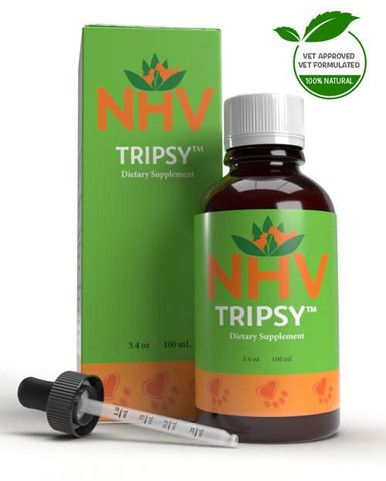
What is it?
NHV Tripsy™ is specially formulated to contain gentle and effective herbal ingredients that help encourage healthy kidney function, proper urinary health and may help with discomfort associated with kidney problems.
How does it work?
Why trust it?
NHV Tripsy has been studied and found to be effective at supporting lower urinary tract health in pets.
When dogs get urinary tract and kidney disorders, it can be very uncomfortable. Poor diets can contribute to kidney stones and even kidney failure, so supporting your canine with supplements that can help is imperative.
NHV Tripsy helps the body stay balanced in many ways. Here are four main organs that may benefit from this gentle kidney support blend.
Powerful Ingredients Effectively Formulated
Read about a recent study done at the University of Georgia College of Veterinary Medicine that found that NHV’s Tripsy, may be beneficial in helping against urinary stone formation.
All NHV’s supplements including those for dog bladder problems are safe to be given along with any vet prescribed medications and are third-party tested to guarantee quality and concentration.
Connect With NHV
If you have questions or concerns about holistic supplements, ask an NHV expert because our pet experts are here to help offer guidance and support for any health issues your pet may have including kidney problems in dogs. At NHV, your dog’s health and well-being is our top priority.
Stone Root – Acts as a tonic for the capillaries and prevents the formation of kidney calculi.
Parsley Piert – Aids digestion. Also used to aid fever, kidney stones, bladder stones, and fluid retention.
Wild Hydrangea – Can help relieve discomfort while increasing the flow of urine and eliminating swelling and fluid retention.
Gravel Root – Restores and cleanses the genitourinary (reproductive and urinary) organs.
Echinacea Purpurea – Contains strong immune-stimulating properties.
Marshmallow – An anti-inflammatory that controls bacterial infections and soothes and softens irritated tissues.
Oregon Grape – Helps relieve indigestion and malabsorption. Also has antibiotic and immunostimulatory properties.
Select your pet's weight to determine the correct dose.
To be taken twice daily. Determine your pet’s weight and then use the easy chart below to determine the correct dose. This is the minimum dosage.
Pet's Weight Dosage
0 - 15 lb = 0.5 ml
16 - 30 lb = 1.0 ml
31 - 45 lb = 1.5 ml
46 - 60 lb = 2.0 ml
61 - 75 lb = 2.5 ml
Over 75 lb = 3.0 ml
How to Administer
Shake well before use. The easiest method is to use the dropper provide and places the drops into your pet’s food or favorite treat. You can also use the dropper and squirt directly into the pet’s mouth.
Some pets can be finicky, if this occurs consider hiding the drops in foods most pet’s love such as fish, chicken or yogurt or a favorite treat. If your pet only eats dry food then soak a few kibbles at feeding time.
For Best Results
Herbal dietary supplements are beneficial to the health and wellbeing of your pet and are safe for long-term use. Every pet responds to natural herbal supplements differently, therefore it is important to be consistent and administer the product daily. Supplements generally take two to four weeks to take effect, however this will vary from one animal to the next.
Product Storage
All NHV Natural Pet Products are pure herbal extracts and contain no artificial additives, preservatives or coloring. Shelf life after opening is 6 months and must be refrigerated after opening.
Cautions and Contraindications
Do not use Tripsy if your pet is pregnant. No known side effects. Speak to your vet before using our products. A second visit is recommended if your pet’s condition does not improve, or deteriorates after continued use of the supplements.
All information provided by NHV Natural Pet Products is for educational purposes only.
When dogs get urinary tract and kidney disorders, it can be very uncomfortable. Poor diets can contribute to kidney stones and even kidney failure, so supporting your canine with supplements that can help is imperative.
NHV Tripsy helps the body stay balanced in many ways. Here are four main organs that may benefit from this gentle kidney support blend.
Powerful Ingredients Effectively Formulated
Read about a recent study done at the University of Georgia College of Veterinary Medicine that found that NHV’s Tripsy, may be beneficial in helping against urinary stone formation.
All NHV’s supplements including those for dog bladder problems are safe to be given along with any vet prescribed medications and are third-party tested to guarantee quality and concentration.
Connect With NHV
If you have questions or concerns about holistic supplements, ask an NHV expert because our pet experts are here to help offer guidance and support for any health issues your pet may have including kidney problems in dogs. At NHV, your dog’s health and well-being is our top priority.
Stone Root – Acts as a tonic for the capillaries and prevents the formation of kidney calculi.
Parsley Piert – Aids digestion. Also used to aid fever, kidney stones, bladder stones, and fluid retention.
Wild Hydrangea – Can help relieve discomfort while increasing the flow of urine and eliminating swelling and fluid retention.
Gravel Root – Restores and cleanses the genitourinary (reproductive and urinary) organs.
Echinacea Purpurea – Contains strong immune-stimulating properties.
Marshmallow – An anti-inflammatory that controls bacterial infections and soothes and softens irritated tissues.
Oregon Grape – Helps relieve indigestion and malabsorption. Also has antibiotic and immunostimulatory properties.
Select your pet's weight to determine the correct dose.
To be taken twice daily. Determine your pet’s weight and then use the easy chart below to determine the correct dose. This is the minimum dosage.
Pet's Weight Dosage
0 - 15 lb = 0.5 ml
16 - 30 lb = 1.0 ml
31 - 45 lb = 1.5 ml
46 - 60 lb = 2.0 ml
61 - 75 lb = 2.5 ml
Over 75 lb = 3.0 ml
How to Administer
Shake well before use. The easiest method is to use the dropper provide and places the drops into your pet’s food or favorite treat. You can also use the dropper and squirt directly into the pet’s mouth.
Some pets can be finicky, if this occurs consider hiding the drops in foods most pet’s love such as fish, chicken or yogurt or a favorite treat. If your pet only eats dry food then soak a few kibbles at feeding time.
For Best Results
Herbal dietary supplements are beneficial to the health and wellbeing of your pet and are safe for long-term use. Every pet responds to natural herbal supplements differently, therefore it is important to be consistent and administer the product daily. Supplements generally take two to four weeks to take effect, however this will vary from one animal to the next.
Product Storage
All NHV Natural Pet Products are pure herbal extracts and contain no artificial additives, preservatives or coloring. Shelf life after opening is 6 months and must be refrigerated after opening.
Cautions and Contraindications
Do not use Tripsy if your pet is pregnant. No known side effects. Speak to your vet before using our products. A second visit is recommended if your pet’s condition does not improve, or deteriorates after continued use of the supplements.
All information provided by NHV Natural Pet Products is for educational purposes only.
arthritis support
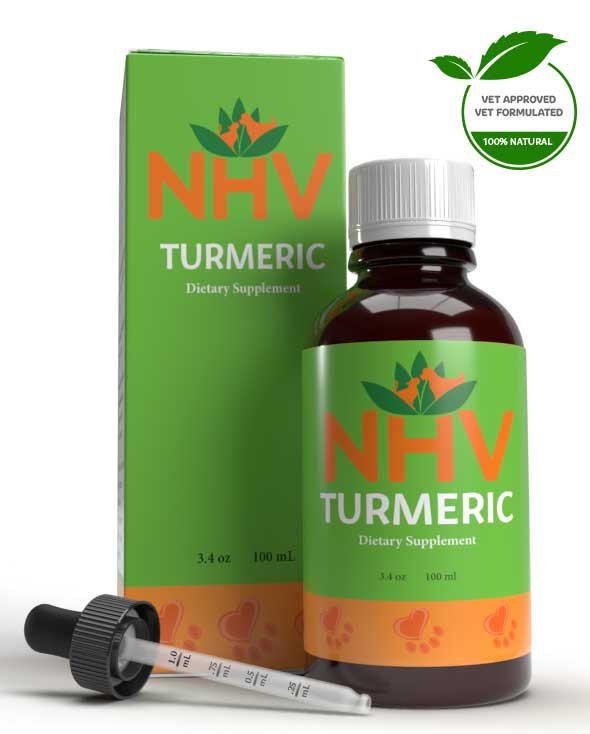
Support for Arthritis and Cancer
buy 2 and save $3
3 month supply for a small to medium size
What is it?
Turmeric is an herb that offers support for cardiovascular issues, skin health, liver and kidney disease, arthritis, and overall well-being.
How does it work?
Why trust it?
NHV Turmeric is vet-formulated and vet-approved.
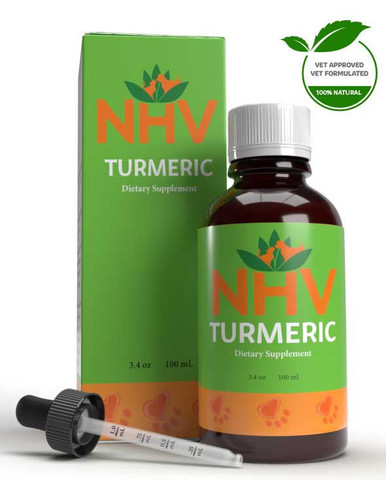
What is it?
Turmeric is an herb that offers support for cardiovascular issues, skin health, liver and kidney disease, arthritis, and overall well-being.
How does it work?
Why trust it?
NHV Turmeric is vet-formulated and vet-approved.
From their tails to their whiskers, a cat’s body needs to be able to fight whatever comes their way - and not just the toys they like to chase, but health concerns too. NHV Turmeric for cats can be given to your furkiddos for a little extra TLC. It’s well-tolerated by our whiskered furkiddos, and can offer them many benefits!
What goes into your cat’s body every day will make a difference when it is time to fight a disease, or when they already have one. That’s why NHV supplements are designed to be given each and every day for things like:
It can even be used proactively before your furry friend becomes sick in the first place by giving them a regular boost of natural goodness!
Turmeric itself is a root with vibrant orange-golden flesh. It’s golden in the world of herbalism for pets with its many healing properties.
One of turmeric’s most well-recognized healing properties is its antioxidant content. Antioxidants can help scavenge for free radicals, which are unstable molecules that cause damage to the cells. The free radical scavenging properties of turmeric can support the body in processing and removing these molecules, minimizing the damage they can do.
At NHV, we are experts at harnessing the benefits of herbal ingredients specifically for your pets. When you choose NHV Turmeric, you’re choosing decades of holistic pet wellness experience from vets and herbalists. Our formula is:
We are proud to have been a part of many cats’ success stories over the decades. Check out this feline friend of ours, Willow, who has used our Turmeric for cats formula for comfort and wellness.
Willow’s Story: “I have no doubt that the supplements from NHV have been a huge part in maintaining her health and staving off the cancer that was found in late 2021”
Holistic Veterinarian Approves of Using Turmeric for Cats
Dr. Hillary, a holistic vet, writes an in-depth overview of Turmeric and why she believes turmeric can play a beneficial role in pet health. Read Dr. Hillary’s Turmeric overview here.
All NHV supplements are made with the finest quality organic or ethically harvested herbs. We use non-GMO vegetable glycerin as our base. NHV products are full-spectrum extracts.
Select your pet's weight to determine the correct dose.
To be taken twice daily. Determine your pet’s weight and then use the easy chart below to determine the correct dose. This is the minimum dosage.
Pet's Weight Dosage
0 - 15 lb = 0.5 ml
16 - 30 lb = 1.0 ml
31 - 45 lb = 1.5 ml
46 - 60 lb = 2.0 ml
61 - 75 lb = 2.5 ml
Over 75 lb = 3.0 ml
How to Administer
Shake well before use. The easiest method is to use the dropper provide and places the drops into your pet’s food or favorite treat. You can also use the dropper and squirt directly into the pet’s mouth.
Some pets can be finicky, if this occurs consider hiding the drops in foods most pet’s love such as fish, chicken or yogurt or a favourite treat. If your pet only eats dry food then soak a few kibbles at feeding time.
For Best Results
Herbal dietary supplements are beneficial to the health and wellbeing of your pet and are safe for long-term use. Every pet responds to natural herbal supplements differently, therefore it is important to be consistent and administer the product daily. Supplements generally take two to four weeks to take effect, however this will vary from one animal to the next.
Product Storage
All NHV Natural Pet Products are pure herbal extracts and contain no artificial additives, preservatives or coloring. Shelf life after opening is 6 months and must be refrigerated after opening.
Cautions and Contraindications: Do not use Turmeric in pregnant or nursing animals. Speak to your vet before using our products. A second visit is recommended if your pet’s condition does not improve, or deteriorates after continued use of the supplements.
From their tails to their whiskers, a cat’s body needs to be able to fight whatever comes their way - and not just the toys they like to chase, but health concerns too. NHV Turmeric for cats can be given to your furkiddos for a little extra TLC. It’s well-tolerated by our whiskered furkiddos, and can offer them many benefits!
What goes into your cat’s body every day will make a difference when it is time to fight a disease, or when they already have one. That’s why NHV supplements are designed to be given each and every day for things like:
It can even be used proactively before your furry friend becomes sick in the first place by giving them a regular boost of natural goodness!
Turmeric itself is a root with vibrant orange-golden flesh. It’s golden in the world of herbalism for pets with its many healing properties.
One of turmeric’s most well-recognized healing properties is its antioxidant content. Antioxidants can help scavenge for free radicals, which are unstable molecules that cause damage to the cells. The free radical scavenging properties of turmeric can support the body in processing and removing these molecules, minimizing the damage they can do.
At NHV, we are experts at harnessing the benefits of herbal ingredients specifically for your pets. When you choose NHV Turmeric, you’re choosing decades of holistic pet wellness experience from vets and herbalists. Our formula is:
We are proud to have been a part of many cats’ success stories over the decades. Check out this feline friend of ours, Willow, who has used our Turmeric for cats formula for comfort and wellness.
Willow’s Story: “I have no doubt that the supplements from NHV have been a huge part in maintaining her health and staving off the cancer that was found in late 2021”
Holistic Veterinarian Approves of Using Turmeric for Cats
Dr. Hillary, a holistic vet, writes an in-depth overview of Turmeric and why she believes turmeric can play a beneficial role in pet health. Read Dr. Hillary’s Turmeric overview here.
All NHV supplements are made with the finest quality organic or ethically harvested herbs. We use non-GMO vegetable glycerin as our base. NHV products are full-spectrum extracts.
Select your pet's weight to determine the correct dose.
To be taken twice daily. Determine your pet’s weight and then use the easy chart below to determine the correct dose. This is the minimum dosage.
Pet's Weight Dosage
0 - 15 lb = 0.5 ml
16 - 30 lb = 1.0 ml
31 - 45 lb = 1.5 ml
46 - 60 lb = 2.0 ml
61 - 75 lb = 2.5 ml
Over 75 lb = 3.0 ml
How to Administer
Shake well before use. The easiest method is to use the dropper provide and places the drops into your pet’s food or favorite treat. You can also use the dropper and squirt directly into the pet’s mouth.
Some pets can be finicky, if this occurs consider hiding the drops in foods most pet’s love such as fish, chicken or yogurt or a favourite treat. If your pet only eats dry food then soak a few kibbles at feeding time.
For Best Results
Herbal dietary supplements are beneficial to the health and wellbeing of your pet and are safe for long-term use. Every pet responds to natural herbal supplements differently, therefore it is important to be consistent and administer the product daily. Supplements generally take two to four weeks to take effect, however this will vary from one animal to the next.
Product Storage
All NHV Natural Pet Products are pure herbal extracts and contain no artificial additives, preservatives or coloring. Shelf life after opening is 6 months and must be refrigerated after opening.
Cautions and Contraindications: Do not use Turmeric in pregnant or nursing animals. Speak to your vet before using our products. A second visit is recommended if your pet’s condition does not improve, or deteriorates after continued use of the supplements.
liver support
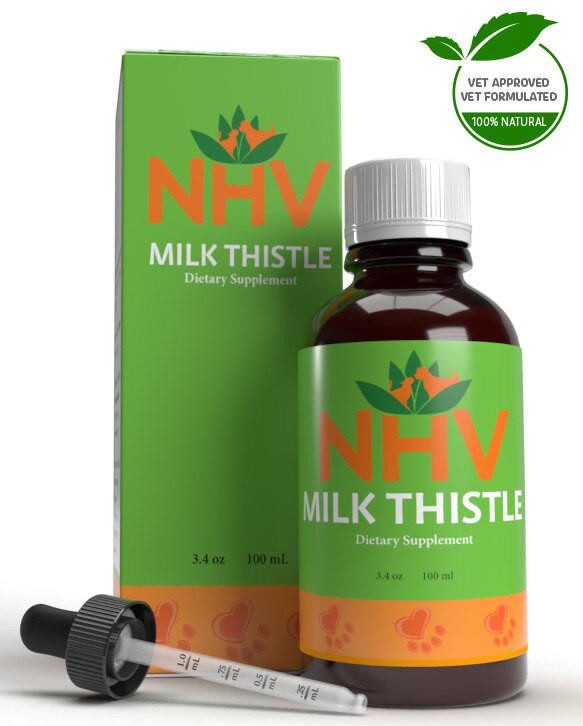
Support for liver and kidney detox and cancer support in dogs
3 month supply for a small to medium size pet
What Is It?
Milk Thistle for dogs is a gentle supplement that supports liver and kidney health, helps with detoxification, and provides antioxidant protection for long-term wellness.
How Does it Work?
Why Should I Trust It?
100% natural vet-formulated herbal remedy.


What Is It?
Milk Thistle for dogs is a gentle supplement that supports liver and kidney health, helps with detoxification, and provides antioxidant protection for long-term wellness.
How Does it Work?
Why Should I Trust It?
100% natural vet-formulated herbal remedy.

Milk Thistle is a powerful herb that’s been used by humans for thousands of years. The active ingredient, silymarin, has been shown through scientific studies to possess strong anti-inflammatory, antioxidant, and detoxifying properties. It also promotes cellular regeneration and repair.
This supplement by NHV Natural Pet Products uses 100% natural milk thistle to support dogs through liver and kidney conditions in addition to conventional treatment by their veterinarian.
Milk thistle improves kidney function due to the damage from:
The extraordinary antioxidant properties of milk thistle for dog extract acts to:
The scientific name for milk thistle is Silybum Marianum. It’s also referred to as wild artichoke and holy thistle.
Milk thistle for dog liver support can be used in conjunction with conventional treatments and is glycerin based and safe for long-term use. You can read more about the benefits of using milk thistle on Dr. Hillary Cook’s blog.
At NHV, all of our products including milk thistle for dog kidney support are plant-based and make excellent proactive support for many health conditions. If you have questions on milk thistle for dogs or any of our holistic supplements, you can ask an expert at NHV because we put your pet first when it comes to health and healing naturally.

Select your pet's weight to determine the correct dose.
To be taken twice daily. Determine your pet’s weight and then use the easy chart below to determine the correct dose. This is the minimum dosage.
Pet's Weight Dosage
0 - 15 lb = 0.5 ml
16 - 30 lb = 1.0 ml
31 - 45 lb = 1.5 ml
46 - 60 lb = 2.0 ml
61 - 75 lb = 2.5 ml
Over 75 lb = 3.0 ml
How to Administer
Shake well before use. The easiest method is to use the dropper provide and places the drops into your pet’s food or favorite treat. You can also use the dropper and squirt directly into the pet’s mouth.
Some pets can be finicky, if this occurs consider hiding the drops in foods most pet’s love such as fish, chicken or yogurt or a favourite treat. If your pet only eats dry food then soak a few kibbles at feeding time.
For Best Results
Herbal dietary supplements are beneficial to the health and wellbeing of your pet and are safe for long-term use. Every pet responds to natural herbal supplements differently, therefore it is important to be consistent and administer the product daily. Supplements generally take two to four weeks to take effect, however this will vary from one animal to the next.
Product Storage
All NHV Natural Pet Products are pure herbal extracts and contain no artificial additives, preservatives or coloring. Shelf life after opening is 6 months and must be refrigerated after opening.
Cautions and Contraindications
Do not use Milk Thistle in pregnant or nursing animals. Speak to your vet before using our products. A second visit is recommended if your pet’s condition does not improve, or deteriorates after continued use of the supplements.
All information provided by NHV Natural Pet Products is for educational purposes only.
Milk Thistle is a powerful herb that’s been used by humans for thousands of years. The active ingredient, silymarin, has been shown through scientific studies to possess strong anti-inflammatory, antioxidant, and detoxifying properties. It also promotes cellular regeneration and repair.
This supplement by NHV Natural Pet Products uses 100% natural milk thistle to support dogs through liver and kidney conditions in addition to conventional treatment by their veterinarian.
Milk thistle improves kidney function due to the damage from:
The extraordinary antioxidant properties of milk thistle for dog extract acts to:
The scientific name for milk thistle is Silybum Marianum. It’s also referred to as wild artichoke and holy thistle.
Milk thistle for dog liver support can be used in conjunction with conventional treatments and is glycerin based and safe for long-term use. You can read more about the benefits of using milk thistle on Dr. Hillary Cook’s blog.
At NHV, all of our products including milk thistle for dog kidney support are plant-based and make excellent proactive support for many health conditions. If you have questions on milk thistle for dogs or any of our holistic supplements, you can ask an expert at NHV because we put your pet first when it comes to health and healing naturally.

Select your pet's weight to determine the correct dose.
To be taken twice daily. Determine your pet’s weight and then use the easy chart below to determine the correct dose. This is the minimum dosage.
Pet's Weight Dosage
0 - 15 lb = 0.5 ml
16 - 30 lb = 1.0 ml
31 - 45 lb = 1.5 ml
46 - 60 lb = 2.0 ml
61 - 75 lb = 2.5 ml
Over 75 lb = 3.0 ml
How to Administer
Shake well before use. The easiest method is to use the dropper provide and places the drops into your pet’s food or favorite treat. You can also use the dropper and squirt directly into the pet’s mouth.
Some pets can be finicky, if this occurs consider hiding the drops in foods most pet’s love such as fish, chicken or yogurt or a favourite treat. If your pet only eats dry food then soak a few kibbles at feeding time.
For Best Results
Herbal dietary supplements are beneficial to the health and wellbeing of your pet and are safe for long-term use. Every pet responds to natural herbal supplements differently, therefore it is important to be consistent and administer the product daily. Supplements generally take two to four weeks to take effect, however this will vary from one animal to the next.
Product Storage
All NHV Natural Pet Products are pure herbal extracts and contain no artificial additives, preservatives or coloring. Shelf life after opening is 6 months and must be refrigerated after opening.
Cautions and Contraindications
Do not use Milk Thistle in pregnant or nursing animals. Speak to your vet before using our products. A second visit is recommended if your pet’s condition does not improve, or deteriorates after continued use of the supplements.
All information provided by NHV Natural Pet Products is for educational purposes only.
Published: January 29, 2022